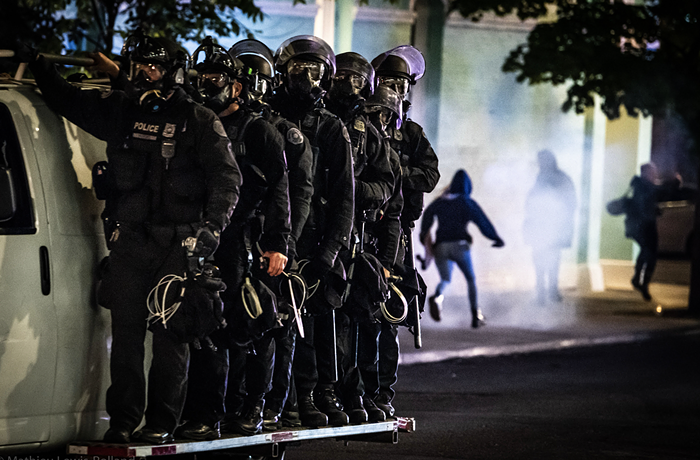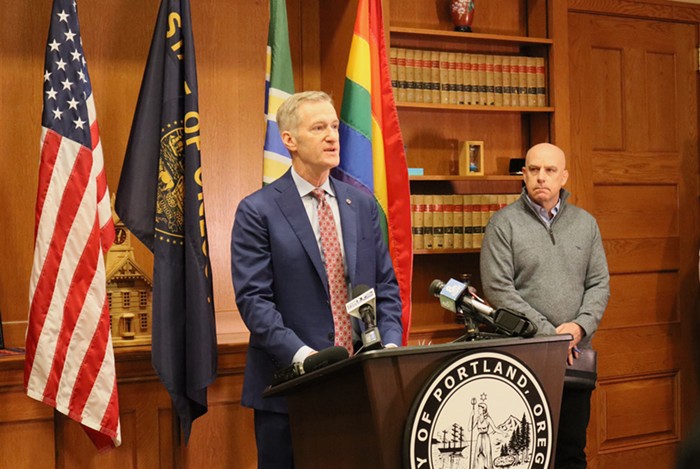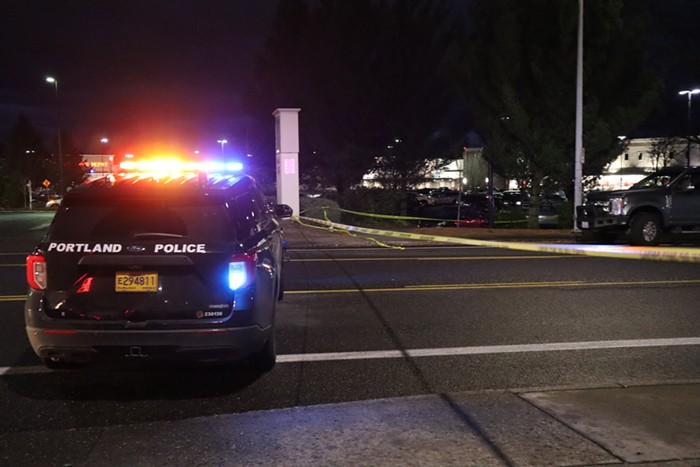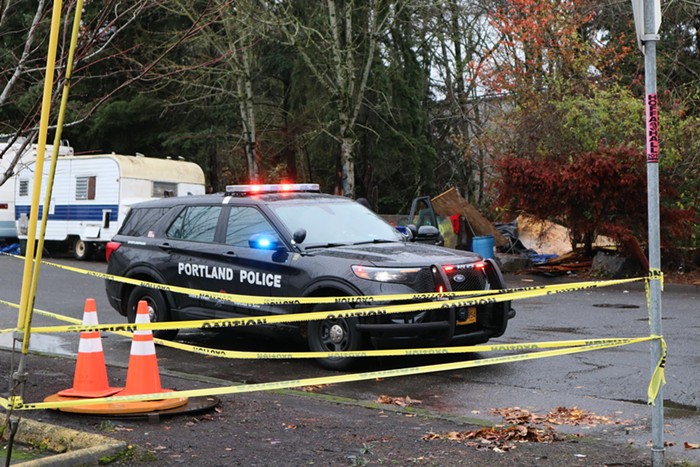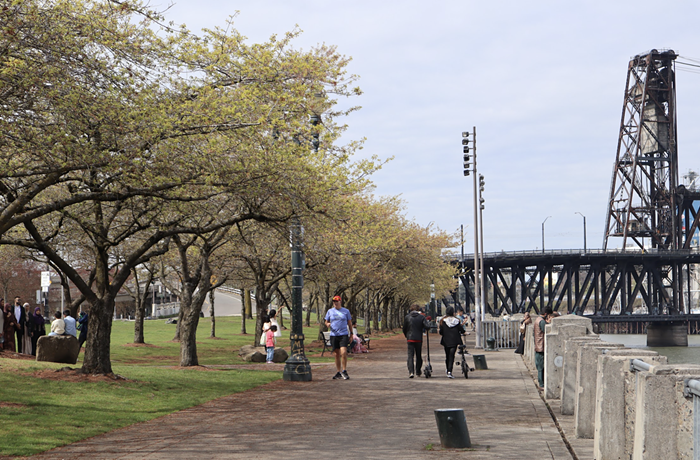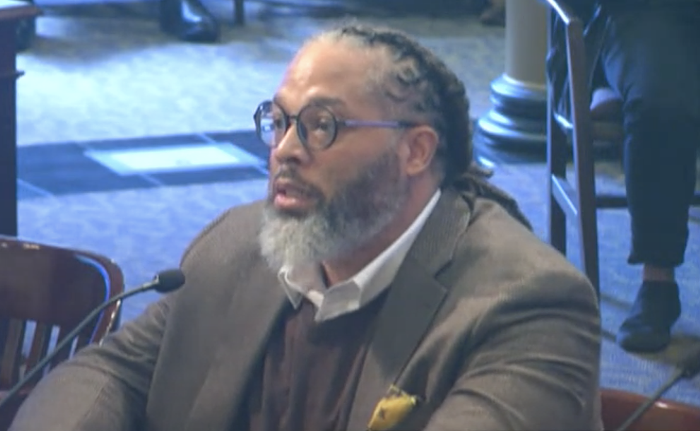
That's because the bureau's response, to a handful of questions submitted Friday, didn't come until this morning. Which is when the paper hits the streets. The full answer is worth reading. But it can be distilled down to a couple of points:
(1) Officers don't use the county's cop crisis line because it, says Sergeant Pete Simpson, because they'd rather call Project Respond—which, Simpson contends, has access to the same information as the county's crisis line. That contradicts what county spokesman David Austin told me; Austin stands by his statement. Update 10 AM Friday: Simpson says Project Respond reported about 900 police calls last year, mostly from Portland.
(2) The bureau is no longer saying flat-out that officers can't take people to the CATC; they are saying, however, that the strict rules for admitting someone there work as "obstacles" for officers who'd prefer a crisis facility where they could immediately drop someone off. Simpson says officers can only put a mental health hold on someone in danger of hurting themselves or others—and that anyone that bad off, he says, has to be stabilized before a CATC admission.
"That's mostly who we encounter," Simpson says. "It's a barrier for the officer on the street, practically, to be able to take people to the CATC."
Austin has acknowledged that the CATC can't take just anybody in crisis. Someone having a severe psychotic episode or with good private insurance, for instance, would likely still end up in an emergency room. But he also says the CATC has taken in some people initially deemed a danger to themselves.
"We would strongly encourage the police bureau to reconsider," he says. "They can bring people to the CATC. We'll continue to have discussions with the police bureau administration and the mayor's office to make sure the police bureau understands how things are going. It sounds like they don't. We're perplexed about where that confusion is coming from."
Simpson's full response is after the jump. Whatever happens, and given the fact that the city and county are each spending hundreds of thousands of dollars making the CATC work—oh, and the idea that lives and health are at stake—let's hope a kumbaya moment happens sooner than later.
One criteria that must be met to take someone to CATC is that they are “no immediate threat to self or others.”
It’s important to note that, unless someone is an immediate threat to themselves or others, officers CANNOT take them into protective custody.
Regarding the "police only" crisis line, PPB officers have a direct line to Project Respond and utilize it frequently. Project Respond has their own database, as well as access to the County's so there is no need to call the County line and Project Respond.
Here’s some additional information on why the CATC is a challenge to officers working the street who are encountering people in crisis:
The Crisis Assessment and Treatment Center (CATC) is a sub-acute mental health treatment facility with a 16-bed capacity. For multiple reasons, the CATC is not set up to accept people who are on a police officer hold (POH). This memorandum outlines the program obstacles to making the CATC able to receive police officer holds.
There are fifteen written criteria for admission to the CATC (see attached CATC admission criteria document). The criteria that creates obstacles for POH admission are:• Person must not be an immediate threat to self or others.
• Substance abuse or intoxication needs to be ruled out as a primary cause of the mental/behavioral symptoms.
• Medical causes of mental/behavioral symptoms must be ruled out, or be very unlikely. The primary way for substance use or intoxication to be ruled out is through laboratory tests. If alcohol/drugs are on board, then medical professionals wait for the substances to clear from the person’s system and then perform another mental health examination/assessment.
• A current mental health assessment has been completed within the last 24 hours. A mental health professional is required to complete and document the mental health assessment.
• “The person is able to participate in the therapeutic milieu.”
The CATC is not set up to take violent or out of control people. No security officers are employed by the CATC—in fact the response plan for an out of control person is to call 911. Only one restraint bed, which has never been used, is on site. They have no ability to sedate people through intramuscular (shot) medication. The CATC relies upon people’s participation and compliance.
The program is not set up to admit patients on an emergency basis; admittance is by appointment only, scheduled in two-hour blocks. A police officer would be required to stay on site until the patient was accepted. If a patient were not accepted, the police officer would be responsible to transport the person to a hospital emergency room.
The only means for law enforcement to meet the medical clearance admittance criteria is to bring the person to a hospital emergency department and wait for the patient to be medically cleared and mentally evaluated. Currently the vast majority of admittance to the CATC is via post hospital care.
People in the mental health crisis that require police response are often acute and require a higher level of security and care than the CATC is set up to treat. Police cannot control how many, when, or how often a POH is required, but it is necessary to have a location available to receive the patients in a timely manner with all the resources necessary to properly care for the person, regardless of their behavior.
